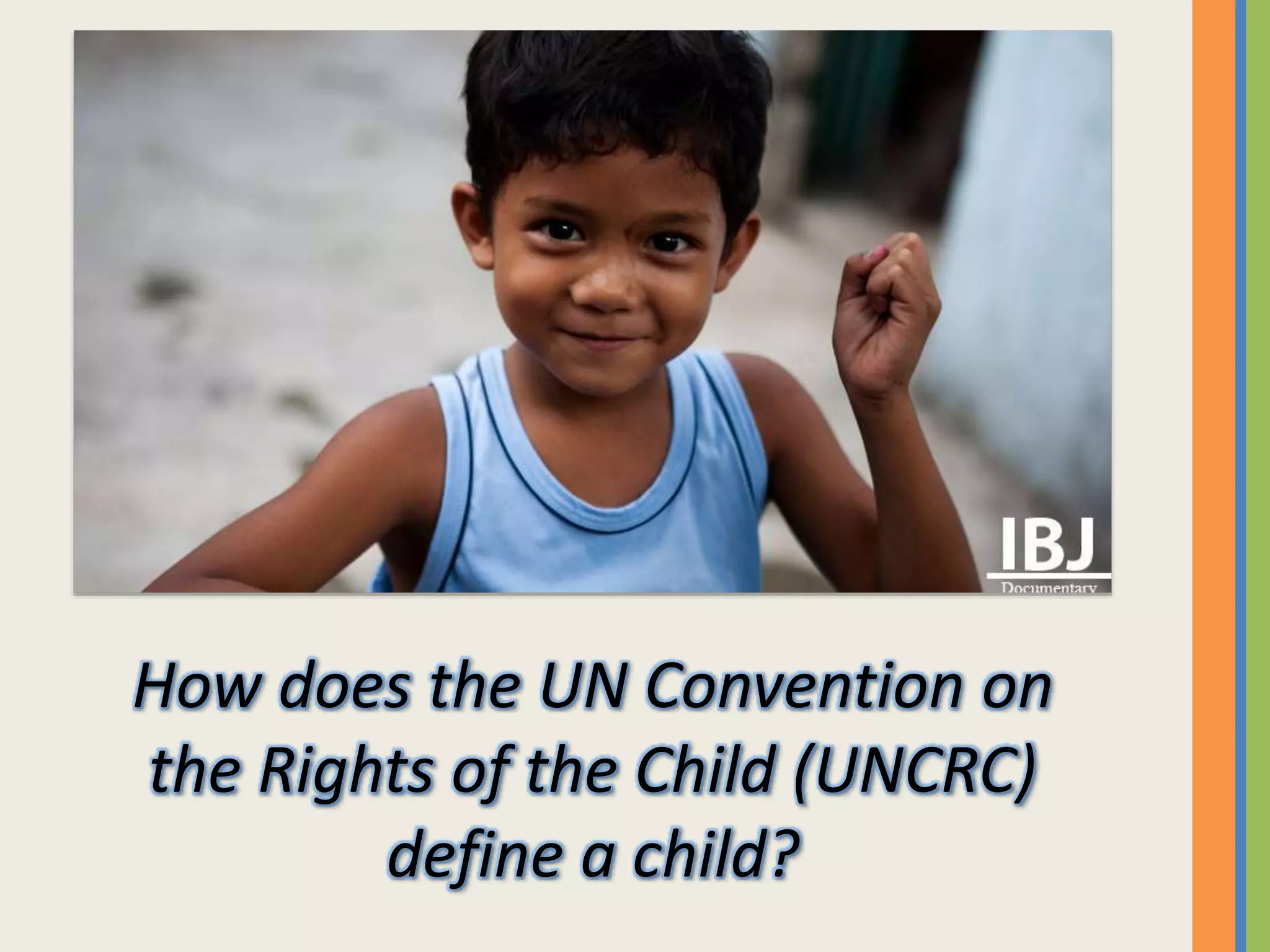The United Nations Convention on the Rights of the Child is an international treaty that defines the rights of children under 18 years old, emphasizing their need for special care and protection. It covers a comprehensive range of rights including provision, protection, and participation, and obligates both states and adults to uphold these rights for all children. Although there are no sanctions for violations, the convention serves as a critical framework for improving the treatment and status of children globally.


















































